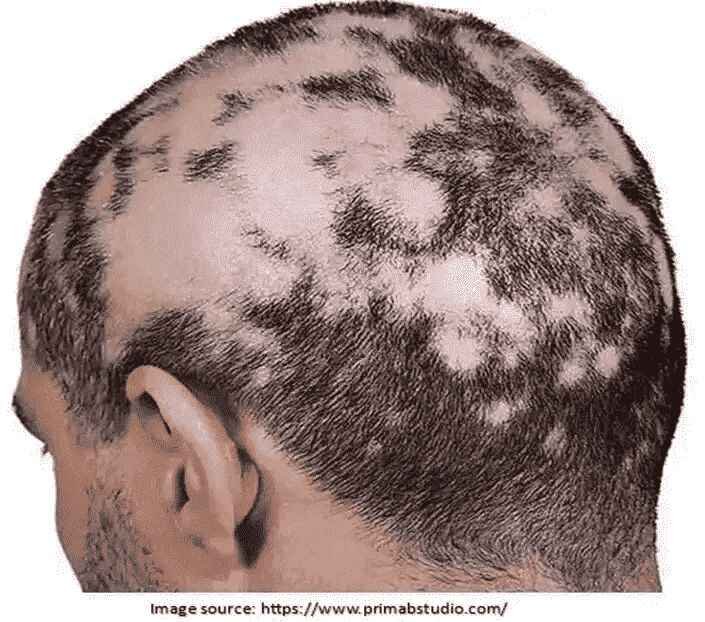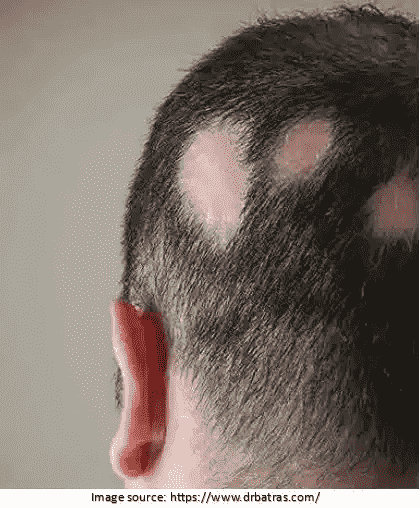Scarring alopecia is a type of hair loss that occurs when hair follicles are destroyed and replaced by scar tissue. This can cause permanent hair loss as scar tissue does not contain hair follicles, the structures responsible for producing hair.
The extent of hair loss and scarring can vary depending on the condition’s underlying cause. In some cases, hair loss may be gradual, while in others, it may occur rapidly.
To address this, hair transplant surgeons offer hair transplantation for scarring alopecia. By transplanting healthy hair follicles into the affected areas, this procedure aims to restore hair growth and minimize the impact of scarring.

Hair transplant in scarring alopecia experts usually diagnose it through physical examination, medical history, and scalp biopsy. Treatment options for scarring alopecia depend on the underlying cause and the extent of hair loss.
According to Dr. Archit Aggarwal, a renowned skin specialist in Faridabad, in some cases of scarring alopecia, medications such as corticosteroids or immunosuppressants may be used to reduce inflammation and slow down the progression of hair loss.
At KDC Clinic, one of the best skin clinic in Faridabad, Dr Archit Aggarwal offers advanced hair restoration treatments like hair transplant surgery to improve the appearance of hair loss caused by scarring alopecia.
Hair transplant surgery can be a suitable treatment option for some patients with scarring alopecia. It can provide long-lasting and natural-looking results. Unlike other hair restoration treatments, such as medications or hairpieces, hair transplantation involves surgically relocating hair follicles from the donor area to the recipient area.
Hair transplantation can be particularly effective for patients with scarring alopecia because it addresses the root cause of hair loss by transplanting translocate healthy hair follicles into the affected areas.
Since scarring alopecia causes permanent damage to the hair follicles, hair transplantation is often the only option for restoring hair growth.
Now, let’s know the,
Types of Scarring Alopecia and Their Causes

1. Primary Scarring Alopecia:
In this type of alopecia, the stem cells in the hair root are destroyed, and the hair follicle is replaced with fibrous tissue. The follicle is the primary site of the attack and the starting point of the disease.
The three subtypes of primary scarring alopecia are lymphocytic, neutrophilic, and mixed. These also include Frontal Fibrosing Alopecia (FFA), Folliculitis Decalvans (FD), Central Centrifugal Alopecia (CCCA), Pseudopelade of brock, and Lichen planopilaris (LPP).
2. Permanent Secondary Scarring Alopecia:
It is usually known as secondary cicatricial alopecia. This condition causes damage to hair follicles due to external factors. These might include harm from heated combs, straightening chemicals, radiotherapy, infections of the scalp such as fungal infection in children (Tinea capitis or kerion), and accidents involving trauma to the scalp.

Let’s understand,
Which is the best Hair Transplant for Scarring Alopecia?
The best type of hair transplantation surgery for scarring alopecia depends on the individual case and the extent of hair loss.
There are two main types of hair transplant techniques:
1. Follicular Unit Transplantation (FUT):

It involves removing a strip of skin from the back of the scalp. Then, the surgeon dissects it into individual hair follicles and transplants them into hair loss areas.
This method is ideal for patients with larger areas of scarring alopecia or those who require a higher number of grafts.
2. Follicular Unit Extraction (FUE):
On the other hand, FUE is a less-invasive and more advanced hair transplant technique than FUT. It involves extracting individual hair follicles from the donor area using a micro punch tool and transplanting them into the areas of hair loss.
Dr. Archit Aggarwal, a skilled dermatologist in Faridabad, offers the most advanced, desired, and best FUE hair transplant in Faridabad. According to Dr. Archit, this method is better suited for patients with smaller areas of scarring alopecia or those who prefer to wear short hair as it leaves minimal scarring.
In some cases, surgeons may combine FUT and FUE to achieve the desired results. It is essential to consult with a qualified hair transplant surgeon with experience treating scarring alopecia to determine the best approach for your case. Dr. Archit Aggarwal offers result-oriented and cost-efficient FUE hair transplant in Faridabad.

Let’s discuss this,
Process of Hair Transplantation for Scarring Alopecia
Hair transplant surgery for scarring alopecia typically involves the following steps:
1. Initial consultation:
The first step in the hair transplant for the Scarring Alopecia process is consulting a certified hair transplant surgeon. During the consultation, the surgeon will evaluate your case, discuss your medical history, and determine if you are a good candidate for the procedure. They may also recommend additional tests or consultations with other medical professionals.

2. Preparation:
Before the surgery, the doctor will advise the patient to avoid taking certain medications and supplements, such as blood thinners, that can increase the risk of bleeding during the procedure. On the day of the surgery, the patient needs to wash their hair and arrive at the clinic with a clean, dry scalp.
3. Anesthesia:
The hair transplant procedure is typically performed under local anesthesia, which numbs the scalp and minimizes discomfort.
4. Donor hair removal:
Using the FUT or FUE method, the surgeon will remove hair follicles from the donor area, usually the back or sides of the scalp.
5. Preparation of hair follicles:
After removing the hair follicles, the surgeon carefully dissects them and prepares them for transplantation.
6. Transplantation:
The surgeon then makes tiny incisions in the areas of hair loss and carefully inserts the hair follicles into them, ensuring that they are placed at the correct angle and direction for optimal growth.
You should choose a qualified and experienced hair transplant surgeon or dermatologist in Faridabad, like Dr. Archit Aggarwal, who can provide personalized recommendations and guide you through the process.
Post-operative Care and Recovery
Post-operative care and recovery after hair transplant surgery for scarring alopecia are crucial to ensure optimal results and minimize the risk of complications.
Here are some general guidelines for post-operative care and recovery:
Regularly hydrating your scalp as advised by the surgeon.
1. Avoid touching your scalp.
2. Avoid strenuous activities.
3. Use cold compresses to reduce swelling and discomfort.
4. Avoid direct sunlight.
5. Avoid smoking and alcohol for at least a week after the surgery.
6. Take the prescribed medication.
7. Allow the scabs to fall off naturally, as picking or scratching them can dislodge the newly transplanted hair follicles.
The recovery time after hair transplant surgery for scarring alopecia can vary depending on the individual case and the hair transplant technique. Following your surgeon’s instructions and attending follow-up appointments is essential to monitor your progress and ensure a successful recovery.
Frequently Asked Questions
Q: How long does the hair transplant surgery take?
A: The length of the procedure depends on the size of the treatment area and the number of hair follicles being transplanted. Typically, the process takes several hours to complete.
Q: Are there any risks or complications associated with the procedure?
A: Like any surgical procedure, hair transplant surgery for scarring alopecia carries some risks and potential complications. They may include loss of the transplanted hair follicles, scarring, inflammation, bleeding, and infection. However, with proper preparation and aftercare, one can minimize the risk of complications.
Q: What is the success rate of hair transplant surgery for scarring alopecia?
A: The success rate of hair transplant surgery depends on several factors, including the severity of the scarring alopecia, the amount of hair loss, the expertise of the surgeon, and the surgical technique used.
Q: How long does it take to see the final results?
A: It can take up to a year to see the final hair transplant surgery results for scarring alopecia. The transplanted hair follicles will initially fall out, and new hair will grow after a few months. The final results will become more apparent over time.
Q: How long do the results of hair transplant surgery last?
A: If the primary disease of scarring remains under control, the hair transplant results for scarring alopecia are considered permanent. However, it is vital to maintain good scalp health and follow a healthy lifestyle to ensure long-lasting results.

